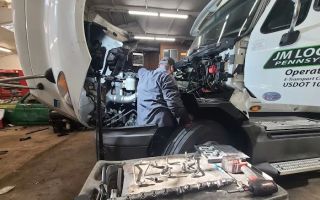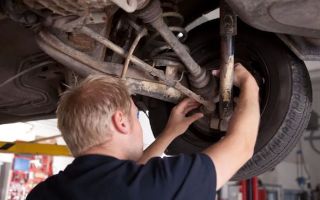Can Emergency Fuel Delivery Be Arranged for Commercial Trucks?
When you're on the road in a commercial truck, time is money. A fuel shortage can cause significant delays, potentially putting your schedule and bottom line at risk. As a truck driver, I’ve faced moments where my fuel gauge didn’t show the full picture, leaving me stranded miles from the nearest fueling station. This is where emergency fuel delivery becomes an invaluable service for commercial truck drivers like myself. But can emergency fuel delivery really be arranged for commercial trucks, and how does it work in practice? In this article, I’ll dive into the details of emergency fuel delivery, how it works for large commercial trucks, and why having this service on hand can save you from costly downtime and logistical headaches.
Understanding Emergency Fuel Delivery
Emergency fuel delivery is a service that provides fuel to vehicles in cases where they run out while on the road. This service is especially crucial for commercial trucks, which often operate far from conventional fueling stations or are operating under tight schedules. In my experience, being able to call for emergency fuel delivery can save not only time but also the financial implications of getting stuck or having to arrange for a tow. It's important to understand how the process works and what kind of service is available for different needs.
For commercial trucks, emergency fuel delivery services can often be arranged by calling a roadside assistance company or using a dedicated service provider. The provider will then send a fuel truck to your location with enough fuel to get you to the nearest fueling station. In some cases, the service can even provide fuel directly into your truck’s tank, allowing you to continue your journey without further delay.
Why Commercial Trucks Need Emergency Fuel Delivery
For many truck drivers, fuel is one of the most crucial factors to consider when planning a route. However, even the best-planned routes can result in unexpected fuel shortages due to heavy traffic, detours, or inaccurate fuel gauge readings. In my own career, I’ve been on long-haul trips where I miscalculated fuel usage, only to find myself running low in a remote location with no immediate access to a fueling station.

Fuel 4
720 Tonnelle Ave, Jersey City, NJ 07307, USA
1. Long Distance and Remote Locations
Commercial trucks often travel long distances and may find themselves in remote locations far from fueling stations. When I was making a delivery in the countryside, I realized I had little fuel left and the nearest gas station was miles away. This is where emergency fuel delivery is a game-changer—it ensures that even in remote areas, you won’t be left stranded.

Nearest gas station
353 Smithtown Blvd, Ronkonkoma, NY 11779, USA
2. Tight Schedules and Delivery Deadlines
Truck drivers often work under strict schedules, and running out of fuel can cause delays that affect not just your arrival time but also your entire delivery chain. I’ve had clients waiting for their deliveries, and missing that window due to a fuel shortage can result in costly fines and strained client relationships. That’s why having emergency fuel delivery can be crucial for staying on schedule.
3. Fuel Efficiency and Unexpected Consumption
Sometimes, the fuel gauge on your truck doesn’t always give you the full picture of fuel consumption. I’ve been in situations where the gauge showed enough fuel for a few more miles, only to run out unexpectedly. In these cases, emergency fuel delivery allows me to bypass the inconvenience and continue driving without worrying about potential downtime for a tow or having to walk to a distant station.
How Emergency Fuel Delivery Works for Commercial Trucks
When you find yourself in need of emergency fuel, it’s important to understand how the service works and how to arrange it efficiently. The process for commercial trucks typically involves a few key steps:
1. Contact a Roadside Assistance Service
The first step in arranging for emergency fuel delivery is to contact a roadside assistance provider. Many major roadside assistance services, including those specifically catering to commercial vehicles, offer fuel delivery as part of their service package. I’ve used services like Rescue & Towing, which offers fuel delivery as an essential part of their roadside assistance for commercial trucks. The service typically responds within 30 minutes to an hour, depending on the location.
2. Providing Your Location and Fuel Requirements
Once you contact the roadside assistance service, you will need to provide your current location, the type of vehicle you are driving, and how much fuel you need. For a large commercial truck, the service provider will ensure they send the appropriate vehicle capable of delivering a sufficient amount of fuel. I’ve found this step to be crucial—providing clear details ensures that the fuel truck arrives with the right fuel and in the right amount to get me back on the road.
3. Fuel Delivery to Your Vehicle
After the service provider has all the necessary information, the fuel truck will be dispatched. Upon arrival, the fuel delivery team will safely pour fuel into your truck’s tank. In most cases, you’ll only need enough fuel to get to the nearest fueling station. In my experience, the process is quick, and I’ve often been able to continue my journey within an hour or so of calling for help.
4. Payment and Receipt
Once the fuel is delivered, you will usually be asked to pay for the service, which may include the cost of the fuel itself as well as a service fee for the delivery. Payment can typically be made via credit card or through an account with the towing company. After payment, you’ll receive a receipt, and you can continue your journey. I’ve always found these services to be fair in pricing, and the time saved makes it well worth the cost.
Real-Life Experiences with Emergency Fuel Delivery
As a long-time truck driver, I’ve had several experiences where emergency fuel delivery saved the day. One particular incident stands out: I was hauling goods across the state when I miscalculated my fuel needs, and before I knew it, my truck was running on empty. I found myself on a remote highway, miles away from the nearest station, and I had no choice but to call for emergency fuel delivery. Within an hour, a fuel delivery truck arrived, and I was back on my way with minimal delay. This experience taught me the value of having a reliable fuel delivery service on hand.
There was another time when I had to pick up a large shipment under a tight deadline, and despite fueling up the night before, a mechanical issue led to unexpected fuel consumption. I called for a fuel delivery service to help me reach the nearest station, and not only did it save me time, but it also helped me stay on schedule, avoiding a potential late delivery that could have cost me more than just fuel.
How to Choose the Right Towing and Roadside Assistance Service
Choosing the right towing and roadside assistance service for emergency fuel delivery is crucial. Not all towing companies offer the same level of service, especially when it comes to commercial trucks. Here are a few key factors to consider when choosing the best service for your needs:
1. Availability and Response Time
One of the most important aspects is availability. Emergencies happen when you least expect them, and it’s essential to find a towing service that offers 24/7 support. A reliable service should respond quickly and reach your location within the shortest time possible. Services like Rescue & Towing provide rapid response times and cater specifically to commercial truck drivers, ensuring that help is always just a phone call away.
2. Specialized for Commercial Trucks
When selecting a roadside assistance service, make sure they specialize in commercial vehicles. Commercial trucks have different needs and require specialized equipment to ensure safe fueling and transport. I always look for services that are equipped with the proper tools and vehicles to handle larger trucks. This ensures that the service will be efficient and safe for my vehicle.
3. Transparency and Pricing
Make sure that the towing company provides clear pricing upfront. Hidden fees can add up quickly, so it’s essential to understand what you’re being charged for. A trustworthy service should provide you with a breakdown of costs, including service fees and the cost of fuel, without any surprise charges. I’ve always appreciated companies that are transparent about their pricing, like Rescue & Towing, which offers straightforward pricing and no hidden fees.
Preventing Fuel Issues in Commercial Trucks
While emergency fuel delivery is an excellent solution for when things go wrong, preventing fuel issues in the first place is always the best strategy. Here are a few tips I’ve learned over the years to help avoid running into fuel problems:
1. Regular Fuel Inspections
Make it a habit to inspect your fuel levels regularly, especially before long-haul trips. I’ve found that keeping a detailed log of fuel stops and consumption helps me avoid running low unexpectedly. Regular checks allow me to adjust my route or plan a stop ahead of time if fuel is running low.
2. Proper Fuel Management
It’s essential to manage fuel consumption effectively by avoiding unnecessary idling or heavy acceleration, both of which can deplete your fuel quicker than you expect. I’ve learned that maintaining a steady speed and avoiding excessive idling can significantly improve fuel efficiency and prevent fuel shortages.
3. Plan Your Route Wisely
Route planning is crucial for avoiding fuel-related issues. Always check for available fuel stations along your route, especially if you’re traveling in rural areas. GPS systems and apps can help find fueling stations in advance, ensuring you’re never too far from a refill point. I always make sure to plan ahead, which helps avoid the panic of running out of fuel in unfamiliar or remote locations.























